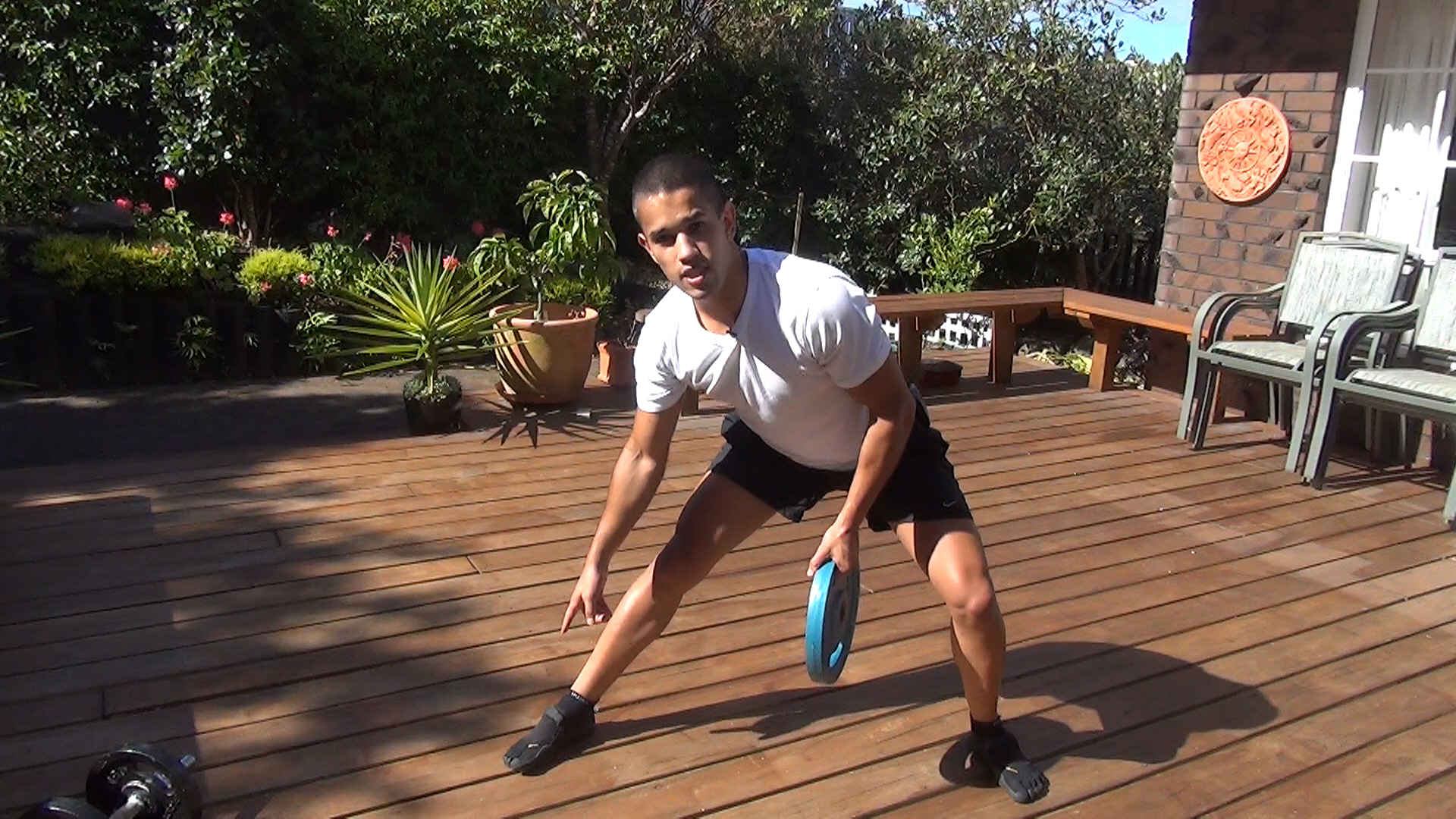Learning how to lunge correctly is often overlooked – when performed correctly the lunge strengthens the quadriceps and glutes. Lets review the technique.
How to Lunge Correctly - Alternate Lunge
• Stance is shoulder width, chest up posture, and shoulders back.
• Take a long step forward, lower to 90 degrees, and bring your rear knee near the floor
• Press up by heel driving, and flow up to shoulder width stance w/ out pauses
Driving through the heel will maximize glute activation and prevents knees from traveling forward excessively.
This is the alternate variation. Stay to watch the rest of the video to learn more about lunges and the other variations.
Lunges are a compound exercise meaning it works multiple joints and therefore training several muscle groups at once.
When a joint changes angle, the muscles of the tendons crossing these joints are stimulated. In this case, the Glutes and quadriceps while all the remaining leg musculature like the hamstrings and calves act as stabilizers throughout the movement.
Let’s introduce the walking variation next, where you may use DBs or a Barbell on the back or front rack position.
Keep the movement flowing, don’t pause in between steps. Always bring the rear knee near the floor to get full range of motion and your chest up with strong posture.
Side Lunges
Side step out, sinking as far as you can manage for maximum muscle recruitment and flexibility
• Foot angle is up to 30 degrees out, heels are grounded.
• Slide across from side to side / stand and side step
• You may also use a plate or BB
Side Lunges will help improve your mobility, and will contribute to getting full range of motion in other exercises such as squats.
Overhead Lunges
• Set your grip to around 90 degrees or greater (depending on mobility)
• Balance the weight above yours shoulder blades and heels
• Shove arm pits forward and shrug the bar up as far as you can
• Elbows stay in full extension
As with Side Lunges, you may use a Plate as well.
Extra Details - For Your Information
I suggested do not let the knees travel excessively forward nor lunge on your toes, I wanted to elaborate more on this but for the sake of film time I did not.
The reason – master the 90 degree variation first as it trains you to coordinate your limbs into the same stable, strong position each time (and structurally prepares you for the more athletic variations). It gives you a better workout in the way it stimulates more muscle groups to a greater extent and allows you to go heavier. Mild knee travel is normal, I only said don’t travel excessively forward.
As for Squats, having the knees travel toward the toes and squatting on your toes is not bad for the knees nor incorrect movement patterns as many athletic activities such as running, landing, sprinting up hill, upstairs etc. etc. are often knee forward / toe landing movements. (The feet are designed for this – to absorb momentum, transfer energy and spring you forward).
(With knee travel in squats – so long as the hips are hinging back its acceptable even with heavy loads but it’s also dependent on the individual’s anthropometry and stance width).
Therefore there are two more lunge variations I excluded
A) Lunge on toes (if fit and healthy, sure, but w/ less weight or just bodyweight if new)
B) Jumping Lunges (as above, but not for beginners, learn 90 degree lunges first)
If you are too unfit for the standard lunge with your bodyweight, then, perform what they call ‘split squats’. You take a long leap forward into that end lunge position but instead of powering back to the starting position you simply press vertically up (without moving the feet). I forgot to demo this but you can YouTube the movement.
Summary and Conclusion
That’s lunging for you – remember to not
• Bring your feet together (width)
• Let the knees travel forward and press from toes
• Drop chest and bend back
• Nor push on legs, thigh assistance = weak glutes
I’ve worked with many clients before who could not perform a simple lunge exercise… and all went on to achieve it by building up strength through using the split squat regression for a few weeks.
Subscribe to me on YouTube.com/AliasDayne and Facebook
